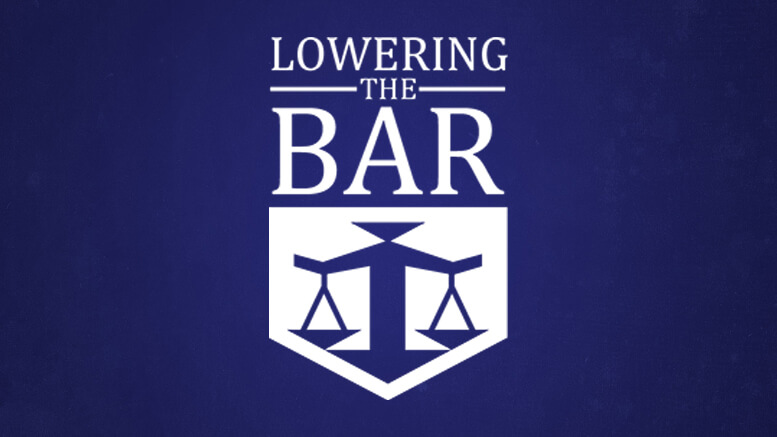A heated battle recently took place in D.C. between the federal government and South Carolina in a voting-rights case that may have important implications for the upcoming election.
Of course I'm referring to lawyers' bickering over font size.
Not that it matters, but the main dispute has to do with South Carolina's voter-ID law, which the Department of Justice blocked on the theory that it violates the 1965 Voting Rights Act. South Carolina sued, and a three-judge panel heard the dispute recently. But that only set the stage for the real conflict, sparked by South Carolina's brazen filing of a post-trial brief openly printed in 12-point font.
Not since Fort Sumter has a shot by South Carolina caused the United States so much angst.
Defendants, United States of America and Eric H. Holder, Jr. (collectively, "the United States"), hereby move to strike South Carolina's [filing] on the grounds that the filing is not in compliance with the font size and page limit requirements previously outlined by the Court. See ECF No. 64 at 3 ("All text shall be double-spaced and in thirteen point Times New Roman, and margins shall be set at one inch.")…. South Carolina's [filing] appear[s] to have been filed in 11.5 or 12-point font, using the maximum page limit of 50 pages. The United States and Defendant-Intervenors, likewise, used their maximum page limits; however, they each adhered to the 13-point requirement. Hence, South Carolina's brief, if properly formatted, would have exceeded its page limit by at least 8 or 10 pages.
Indeed that is a substantial overage, and if South Carolina was really cheating, then at least theoretically it would have gained an unfair advantage by doing so. In fact, the DOJ almost made this sound like a matter of national security:
Being required to respond at a page-length disadvantage of approximately 20% is extremely prejudicial to the United States.
These days being considered "prejudicial to the United States" is more than enough to get you an extended stay in Gitmo (not even joking), so statements of this kind should be taken seriously.
To be fair to the United States (and hopefully stay out of Gitmo), it was at least embarrassed to be bothering the court with this. "The United States would not ordinarily burden the court with a type-size dispute," it explained, "and regrets that it must do so here. However, the parties are operating within significant space constraints for post-trial briefing." That part I don't buy, because 50 pages should be more than enough for any brief ever (I was once forced to file a 41-pager, and I still wake up screaming), although some people will say with a straight face that not a page less than 239 will do.
A better point was that this briefing involved "proposed findings of fact and conclusions of law" that parties must draft in federal court, and the U.S. had a lot to respond to. It seems unlikely that it had a real dispute with every single paragraph in the state's brief; but even if it did, in my view you then throw caution to the wind and also use the smaller font size, explaining in a footnote. Or maybe call the court's clerk. Or you can start a new round of briefing by moving to strike the non-compliant brief, which is what the U.S. did.
Oh, but you are mistaken, South Carolina wrote in response:
The instant dispute arises from the fact that this Court's initial Scheduling and Procedures Order … directed the parties to use 13-point Times New Roman font.… But the July 3 Order … omitted the 13-point font requirement. South Carolina understood that omission to signify that the parties may use 12-point font.… South Carolina did not use 12-point font to seek a tactical advantage over the United States, and it is unfortunate that the United States' filing is in a larger font. But South Carolina’s filing complies with this Court’s July 3 Order. Thus, there is no reason to strike South Carolina’s filing or grant the United States’ alternative request to exceed (by an unspecified amount) the page limits in its forthcoming opposition …. South Carolina of course has no objection to [the] United States' use of 12-point font in that opposition.
I reproduced that at length—though I actually shortened it quite a bit—just in case there is anyone out there still considering law school.
After convening to consider the issue, and possibly also rethinking their own decisions to attend law school, the judges ruled that they, too, had no objection to the United States' use of 12-point font in its opposition. "[A]nd it is further ORDERED," they continued, "that all other filings from all parties shall henceforth be in 13-point font." Wrong again, South Carolina: 12-point font was never authorized. But unlike the Fort Sumter thing, this time you got away with it.
The panel is expected to rule (using whatever font it wants to) on the voter-ID law in September.
